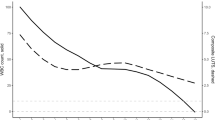Abstract
Urinary Tract Infections (UTIs) represent a significant health problem, both in hospital and community–based settings. Normally, UTIs are diagnosed by traditional methods, based on cultivation of bacteria on Petri dishes, followed by a visual evaluation by human experts. In this paper, we present a fully automated system for the screening, that can provide quick and traceable results of UTIs. Actually, based on image processing techniques and machine learning tools, the recognition of bacteria and the colony count are automatically carried out, yielding accurate results. The proposed system, called AID (Automatic Infections Detector) provides support during the whole analysis process: first digital color images of the Petri dishes are automatically captured, then specific preprocessing and spatial clustering algorithms isolate the colonies from the culture ground, finally an accurate classification of the infection types and their severity is performed. Some important aspects of AID are: reduced time, results repeatability, reduced costs.
Access this chapter
Tax calculation will be finalised at checkout
Purchases are for personal use only
Similar content being viewed by others
Notes
- 1.
It is estimated that about 150 million UTIs occur world–wide yearly, giving rise to roughly 5 billion health care expenditures.
- 2.
The term screening is used here in its common meaning of a routine test performed on a large population, to identify those who are likely to develop a specified disease. Instead, in in vitro diagnostics it stands for preventive analyses aimed at establishing if a sample is positive or not.
- 3.
Rapid reporting is crucial especially when pediatric patients are involved since, in this case, the infection symptoms are not always specific, while it is urgent to decide if an antibiotic therapy is necessary or not and when to start it.
- 4.
A confusion matrix allows the visualization of the performance of a supervised learning classifier. Each column represents the instances in the predicted class, while each row represents the instances in the actual class. Its name stems from the fact that it clearly shows if the system is confusing two classes (i.e. commonly mislabeling one as another).
- 5.
The p–test results for the Red, Blue and Yellow classifiers are respectively 0.0580, 0.0747, 0.0964.
- 6.
Actually, Petri dishes on which many different infections are simultaneously present are considered to be contaminated, and they are of little interest to biologists.
References
Ballabio, C., Venturi, N., Scala, M.R., Mocarelli, P., Brambilla, P.: Evaluation of an automated method for urinoculture screening. Microbiol. Med. 5(3), 178–180 (2010)
Deserno, T.M. (ed.): Biomedical Image Processing. Springer, New York (2011)
Berlin, A., Sorani, M., Sim, I.: A taxonomic description of computer-based clinical decision support systems. J. Biomed. Inform. 39, 656–667 (2006) (Elsevier)
Belazzi, R., Diomidous, M., Sarkar, I.N., Takabayashi, K., Ziegler, A., McCray, A.T., Sim, I.: Data analysis and data mining: current issues in biomedical informatics. Methods Inf. Med. 50(6), 536–544 (2011) (Schattauer Publishers)
Agah, A. (ed.): Artificial Intelligence in Healthcare. CRC Press, Boca Raton (2014)
Heckerling, P.S., Canaris, G.J., Flach, S.D., Tape, T.G., Wigton, R.S., Gerber, B.S.: Predictors of urinary tract infection based on artificial neural networks and genetic algorithms. Int. J. Med. Inform. 76(4), 289–296 (2007)
Bianchini, M., Maggini, M., Jain, L.C. (eds.): Handbook on Neural Information Processing, Intelligent Systems Reference Library, vol. 49. Springer, Berlin (2013)
Bandinelli, N., Bianchini, M., Scarselli, F.: Learning long-term dependencies using layered graph neural networks. In: Proceedings of IJCNN 2012, pp. 1–8 (2012)
Torres, A., Nieto, J.J.: Fuzzy Logic in Medicine and Bioinformatics. J. Biomed. Biotechnol. 91908 (2006)
Dey, D.K., Ghosh, S., Mallick, B.K.: Bayesian Modeling in Bioinformatics. CRC Press, Boca Raton (2010)
Automated urine screening systems. NHS Purchasing and Supply Agency, CEP 10031 Evaluation report, 2011
Hunter, R.S.: Photoelectric color difference meter. Proc. Winter Meet. Opt. Soc. Am. 38(7), 661 (1948) (JOSA)
Comaniciu, D., Meer, P.: Mean-shift: a robust approach toward feature space analysis. IEEE Trans. Pattern Anal. Mach. Intell. 24, 603–619 (2002)
Gonzalez, R., Woods, R.: Digital Image Processing, pp. 414–428. Addison Wesley, Boston (1992)
Smith, A.R.: Color gamut transform pairs. Proc. 5th Ann. Conf. Comput. Graph. Interact. Tech. 12(3), 12–19 (1978)
Otsu, N.: A threshold selection method from gray-level histograms. IEEE Trans. Syst. Man Cybern. 9, 62–66 (1979)
Rother, C., Kolmogorov, V., Blake, A.: GrabCut: interactive foreground extraction using iterated graph cuts. ACM Trans. Graph. 23, 309–314 (2004)
Acknowledgments
The authors want to thank the R&D team of DIESSE Ricerche Srl, Siena, for having stimulated this work and for the support given in collecting data and testing AID both in its prototype and final releases.
Author information
Authors and Affiliations
Corresponding author
Editor information
Editors and Affiliations
Rights and permissions
Copyright information
© 2015 Springer International Publishing Switzerland
About this paper
Cite this paper
Andreini, P., Bonechi, S., Bianchini, M., Mecocci, A., Di Massa, V. (2015). Automatic Image Classification for the Urinoculture Screening. In: Neves-Silva, R., Jain, L., Howlett, R. (eds) Intelligent Decision Technologies. IDT 2017. Smart Innovation, Systems and Technologies, vol 39. Springer, Cham. https://doi.org/10.1007/978-3-319-19857-6_4
Download citation
DOI: https://doi.org/10.1007/978-3-319-19857-6_4
Published:
Publisher Name: Springer, Cham
Print ISBN: 978-3-319-19856-9
Online ISBN: 978-3-319-19857-6
eBook Packages: EngineeringEngineering (R0)




